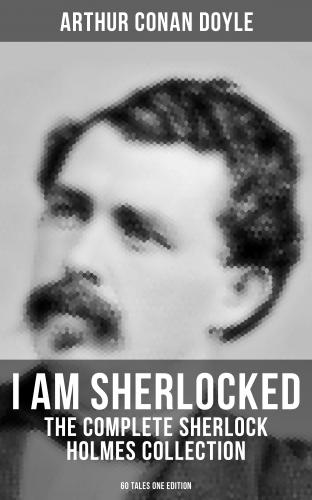One of the mysteries submitted to Mr. Holmes was rather upon the psychic plane and therefore beyond his powers. The facts as alleged are most remarkable, though I have no proof of their truth save that the lady wrote earnestly, and gave both her name and address. The person, whom we will call Mrs. Seagrave, had been given a curious secondhand ring, snake-shaped, and dull gold. This she took from her finger at night. One night she slept with it on, and had a fearsome dream in which she seemed to be pushing off some furious creature which fastened its teeth into her arm. On awakening, the pain in the arm continued, and next day the imprint of a double set of teeth appeared upon the arm, with one tooth of the lower jaw missing. The marks were in the shape of blue-black bruises which had not broken the skin.
“I do not know,” says my correspondent, “what made me think the ring had anything to do with the matter, but I took a dislike to the thing, and did not wear it for some months, when, being on a visit, I took to wearing it again.” To make a long story short, the same thing happened, and the lady settled the matter forever by dropping her ring into the hottest corner of the kitchen range. This curious story, which I believe to be genuine, may not be as supernatural as it seems. It is well known that in some subjects a strong mental impression does produce a physical effect. Thus a very vivid nightmare dream with the impression of a bite might conceivably produce the mark of a bite. Such cases are well attested in medical annals. The second incident would, of course, arise by unconscious suggestion from the first. None the less, it is a very interesting little problem, whether psychic or material.
Buried treasures are naturally among the problems which have come to Mr. Holmes. One genuine case was accompanied by the diagram here reproduced. It refers to an Indiaman which was wrecked upon the South African coast in the year 1782. If I were a younger man, I should be seriously inclined to go personally and look into the matter.
The ship contained a remarkable treasure, including, I believe, the old crown regalia of Delhi. It is surmised that they buried these near the coast, and that this chart is a note of the spot. Each Indiaman in those days had its own semaphore code, and it is conjectured that the three marks upon the left are signals from a three-armed semaphore. Some record of their meaning might perhaps even now be found in the old papers of the India office. The circle upon the right gives the compass bearings. The larger semicircle may be the curved edge of a reef or of a rock. The figures above are the indications how to reach the X which marks the treasure. Possibly they may give the bearings as one hundred and eighty-six feet from the 4 upon the semicircle. The scene of the wreck is a lonely part of the country, but I shall be surprised if, sooner or later, some one does not seriously set to work to solve the mystery.
One last word before I close these jottings about my imaginary character. It is not given to every man to see the child of his brain endowed with life through the genius of a great sympathetic artist, but that was my good fortune when Mr. Gillette turned his mind and his great talents to putting Holmes upon the stage. I cannot end my remarks more fittingly than by my thanks to the man who changed a creature of thin air into an absolutely convincing human being.
First Published 1887
Contents
PART I
III. The Lauriston Garden Mystery
IV. What John Rance Had To Tell
V. Our Advertisement Brings A Visitor
VI. Tobias Gregson Shows What He Can Do
PART II
III. John Ferrier Talks With the Prophet
VI. A Continuation of the Reminiscences of John H. Watson, M.D.
PART I
(Being a reprint from the reminiscences
of JOHN H. WATSON, M.D., late of
the Army Medical Department.)
MR. SHERLOCK HOLMES
In the year 1878 I took my degree of Doctor of Medicine of the University of London, and proceeded to Netley to go through the course prescribed for surgeons in the army. Having completed my studies there, I was duly attached to the Fifth Northumberland Fusiliers as Assistant Surgeon. The regiment was stationed in India at the time, and before I could join it, the second Afghan war had broken out. On landing at Bombay, I learned that my corps had advanced through the passes, and was already deep in the enemy’s country. I followed, however, with many other officers who were in the same situation as myself, and succeeded in reaching Candahar in safety, where I found my regiment, and at once entered upon my new duties.
The campaign brought honours and promotion to many, but for me it had nothing but misfortune and disaster. I was removed from my brigade and attached to the Berkshires, with whom I served at the fatal battle of Maiwand. There I was struck on the shoulder by a Jezail bullet, which shattered the bone and grazed the subclavian artery. I should have fallen into the hands of the murderous Ghazis had it not been
